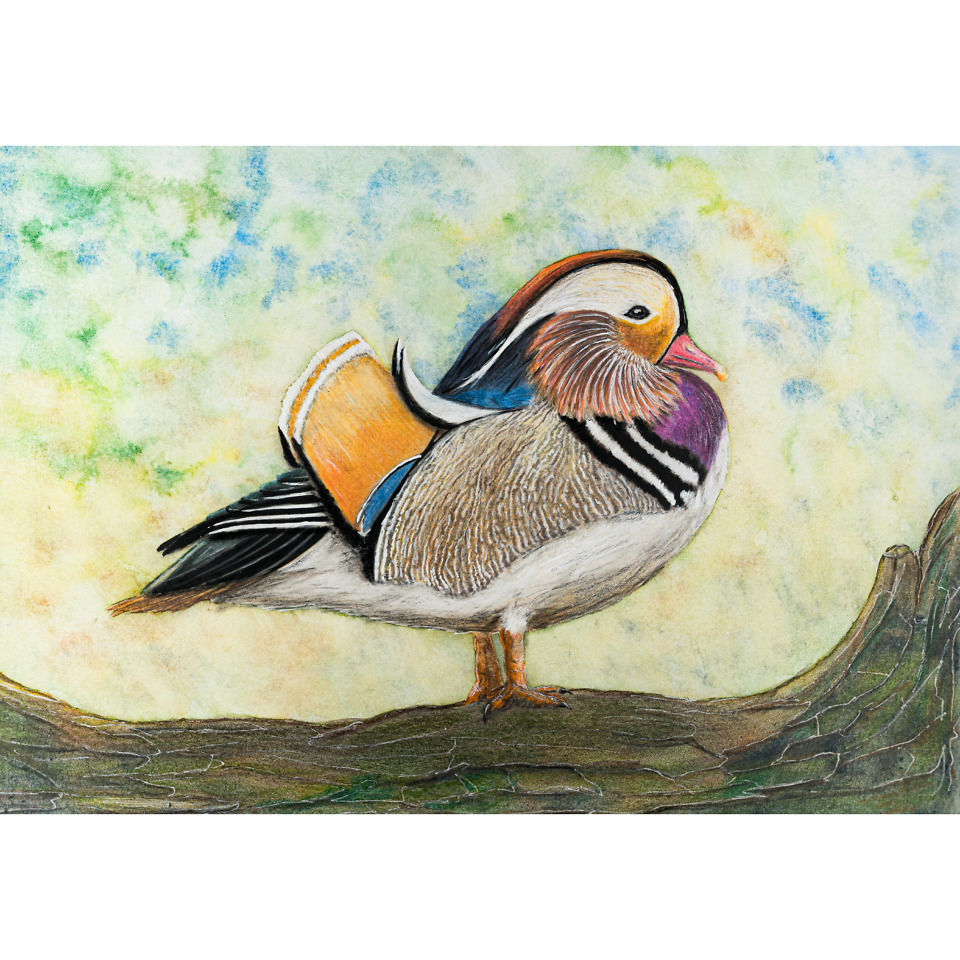
Cotman watercolours tubes on Canson paper Illustration Bristol extra-blanc, extra smooth, 250g/m2, 21.0 x 29.7 cm (A4).
The male Mandarin (Aix galericulata) has a striking and colorful appearance. As you can see in the painting, the male is a real eye-catcher. He has beautiful orange sideburns, graceful feathers and colorful plumage. They are truly a sight to behold! I’ve always liked them since I first saw this species. And let’s face it, who wouldn’t want to capture something like that….
The female, on the other hand, is, as with most ducks, a bit simpler in color, with gray-brown tones and a white eyebrow stripe.
This duck species is native to East Asia. But nowadays they also seem to be found ‘wild’ in the Netherlands (thanks to escaped specimens from aviaries). Have you ever seen them in the wild? Want to see them? Then look in old parks and gardens, near streams and lakes. By the way: I took my reference photo in Rotterdam’s Blijdorp Zoo, so it was not really wild. I don’t know where my other reference photo (downloaded from Pixabay) was taken.
I read that since the end of the last century they have even bred in the wild here. They often breed in tree cavities and usually lay 8 to 12 eggs. The young leave the nest after just one day.
They like to live in areas with old trees, close to lakes and rivers with rich riparian vegetation. Their diet varies: in the summer they mainly eat aquatic insects, while in the winter they switch to plant foods such as seeds and nuts.
Reference: sharkolot via Pixabay
–..– Facebook –..– Instagram –..– Adobe Portfolio –..– Photo albums –..– Nature blog –..–
